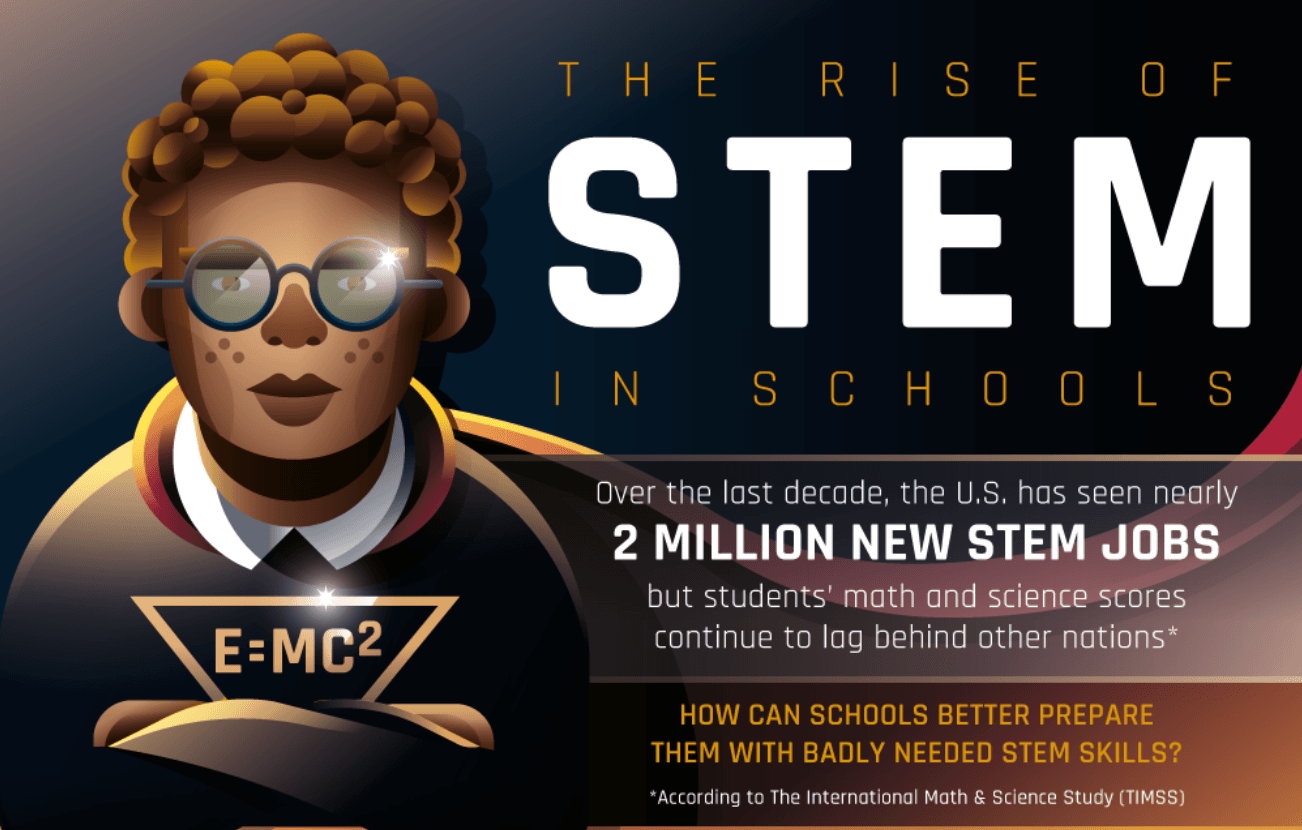Almost 20 years ago educators began to sound alarm bells about science, technology, engineering, and mathematics education in the United States. At that point in time 51% of U.S. patents were held by foreign nationals or foreign corporations, and American 8th graders placed 12th in the world in standardized testing for math and science skills behind Singapore, Japan, Taiwan, South Korea, and Hong Kong. The mission was clear: if we didn’t do something to bring up STEM education competency, the economy of the United States would eventually begin to suffer.
Just two years after that initial report was released, the America COMPETES Act was passed. This Act increased funding for STEM education and research programs, including scholarships for teachers who would go into these fields to teach them. Even today the resulting curriculum is being taught to 71% of U.S. students.
In 2013 the Next Generation Science Standards (NGSS) were set, which set international testing standards to measure the success of these programs worldwide. In 2015 the Every Student Succeeds Act was passed, which increased federal funding for K-12 STEM education and added computer science to the mix, among other things.
The high school graduates who are graduating today are some of the first to go through school with these standards in place. Likewise, the teachers who were recruited to teach these subjects are finally starting to be fully integrated into the mix. The results of these policies are just starting to become apparent.
STEM education good news
The good news? Between 2015 and 2018, the United States showed significant progress in its international standing. Tenth-graders in 2015 ranked 35th for math and 17th for science worldwide, while tenth-graders in 2018 ranked 30th for math and 11th for science.
Test results show a slightly different story, however. Between 1995 and 2015, both 4th and 8th graders improved their math skills significantly. These scores were higher in both high and low-performing students across the board. Science skills remained about the same for both groups during that time period. While low-performing students showed significant progress, high-performing students in both 4th and 8th grade actually declined in science.
There is still time to see the results of these policies play out, however. Today, 86% of high school graduates plan to pursue a STEM career, and there has been a 43% increase in STEM undergraduates between 2010-2016.
Learn more about the rise of STEM education in schools and what it might mean for the economy below!
[REITs]




